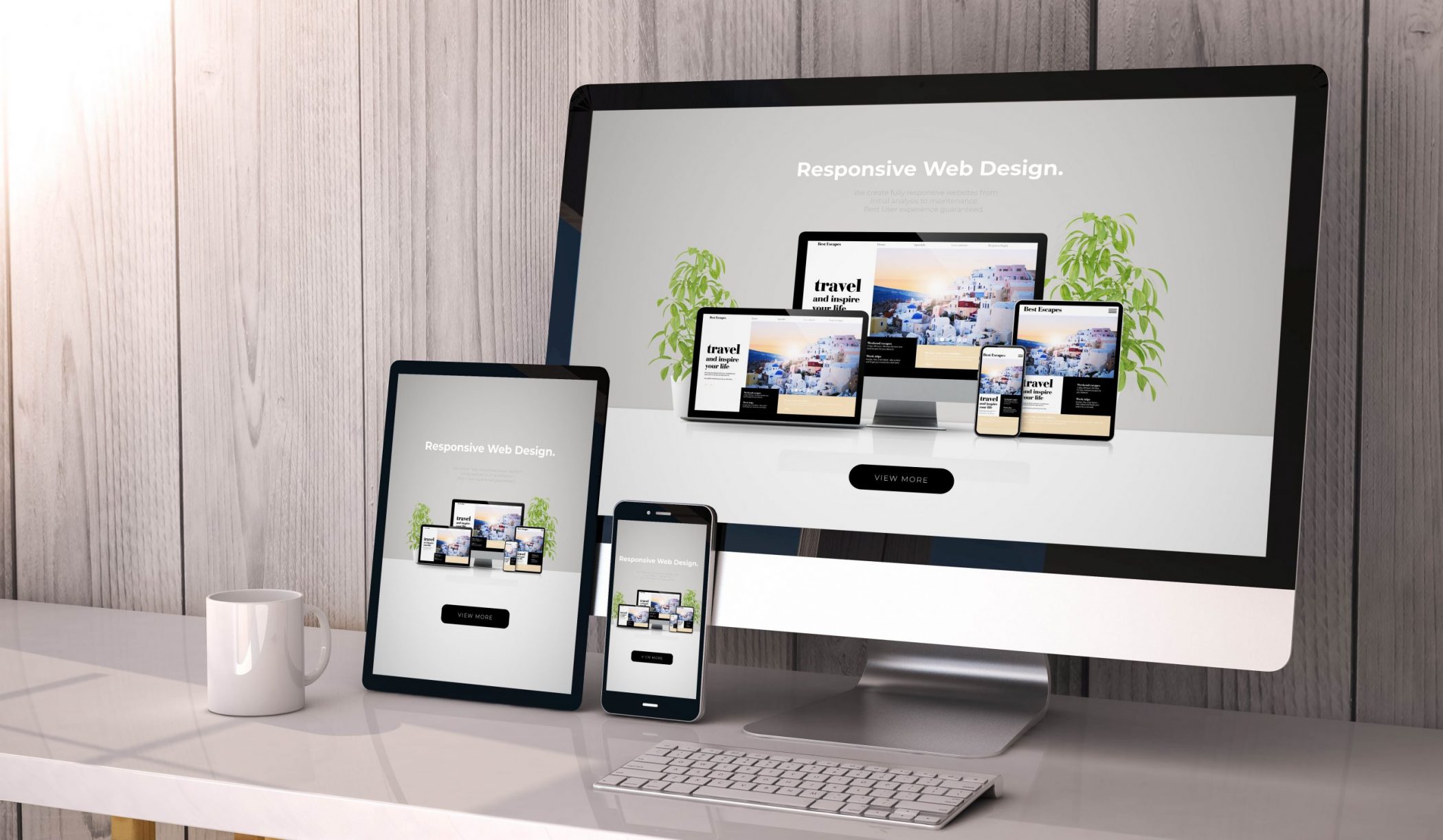How Web Design Affects User Engagement and Conversion Rates
How Web Design Affects User Engagement and Conversion Rates
Blog Article
Elevate Your Online Presence With Sensational Website Design Tips and Trends
In today's electronic landscape, a compelling on-line presence is necessary for businesses seeking to identify themselves from the competition. The interaction of aesthetic allure, existing layout patterns, and user experience plays a crucial function in attaining this goal. By discovering aspects such as minimalism, strong typography, and vivid color pattern, you can produce an engaging environment that resonates with visitors. However, the nuances of reliable style extend beyond aesthetic appeals; recognizing key techniques for optimization can dramatically impact your success. What certain trends and techniques can raise your web site to brand-new heights?
Importance of Visual Appeal
This fact emphasizes the important duty that aesthetics play in individual involvement and retention. Effective visual style encompasses elements such as shade plans, images, format, and typography, all of which contribute to a cohesive and enticing individual experience.
Furthermore, an aesthetically enticing web site instills a sense of credibility and professionalism and trust. Customers are most likely to trust a website that looks well-structured and sleek, which can dramatically affect conversion prices. Alternatively, a cluttered or unsightly layout can lead to high bounce rates, as individuals may view the internet site as untrustworthy or out-of-date.
In addition, the visual elements of an internet site can communicate brand name identification and values (Web design). Consistent usage of branding elements, such as logo designs and color combinations, strengthens acknowledgment and cultivates a deeper connection with the audience. To conclude, focusing on aesthetic allure is vital for producing appealing, reliable, and brand-aligned online experiences that resonate with users
Present Design Fads
Modern website design is constantly progressing, and remaining updated with existing fads is necessary for developing impactful on-line experiences. One prominent trend is the rise of minimalism, defined by clean lines, adequate white space, and a concentrate on necessary aspects. This strategy not only enhances use but likewise permits material to take center phase.
Additionally, dark mode user interfaces have actually gotten popularity, giving users with a visually striking alternative while reducing eye stress. This trend straightens well with individual choices, supplying a modern-day visual that is both elegant and useful.
Another notable trend is the unification of vibrant typography. Designers are significantly using huge, expressive font styles to create visual power structure and communicate brand name messages successfully. Coupled with vivid shade palettes, this pattern adds dynamism to website.

Crucial Layout Aspects
Efficient website design hinges on numerous necessary layout components that with each other develop a appealing and natural individual experience. The very first of these aspects is format, which determines just how content is organized on the page. A well-structured design not just improves readability yet likewise guides individuals via the site flawlessly.
Shade plays a crucial duty in style, influencing emotions and brand assumption. A harmonious color scheme can stimulate particular sensations and establish a visual power structure, therefore drawing interest to crucial elements. Typography is important; the selection of font styles need to align with the brand name identification and make sure clarity across devices.
Additionally, whitespace is often ignored but is essential for producing balance. It aids protect against clutter, permitting users to concentrate on the important components without disturbance.
Lastly, uniformity article source across all layout aspects enhances brand identification and makes navigation instinctive. By meticulously incorporating these important layout aspects, web developers can develop aesthetically attractive and practical sites that captivate site visitors and motivate communication.
Individual Experience Optimization
A smooth customer experience is crucial for preserving site visitors and driving conversions on an internet site. Enhancing individual experience (UX) involves comprehending your target market and tailoring layout components to meet their requirements properly. Secret parts of UX optimization include instinctive navigating, quickly loading times, and clear contact us to activity.
Include breadcrumb routes to aid individuals easily backtrack, minimizing disappointment. Rate is one more essential variable; websites must fill within three secs to prevent individuals from abandoning the site.
In addition, your web site's layout ought to focus on quality. Usage understandable fonts, contrasting shades, and whitespace to develop an aesthetically appealing layout that guides customers via web content effortlessly. Phone call to activity should be plainly presented, utilizing workable language that motivates users to involve.
Mobile Responsiveness Methods
Almost fifty percent of all web traffic currently originates from mobile phones, emphasizing the importance of executing robust mobile responsiveness approaches. To guarantee optimum user experience across different screen dimensions, internet developers should embrace a liquid grid design that adapts flawlessly to various tools. This technique enables material to resize and rearrange without compromising functionality or click resources appearances.
Incorporating flexible photos and media inquiries is important. Images must instantly change their size according to the viewport, while media inquiries can identify gadget characteristics and use tailored CSS designs as necessary. This technique enhances tons times and makes sure that individuals have a visually enticing experience.
In addition, focus on touch-friendly navigation aspects. Buttons and web links must be conveniently tappable, with appropriate spacing to avoid misclicks. Staying clear of hover-dependent interactions further improves use on touchscreens.
Finally, conducting routine screening across different gadgets and internet browsers is essential. Devices like Google's Mobile-Friendly Test can aid identify areas needing enhancement. By adopting these mobile responsiveness strategies, services can boost user involvement, increase internet search engine rankings, and inevitably drive conversions, consequently raising their on-line existence efficiently.
Final Thought
In verdict, the execution of reliable web design strategies considerably improves on the internet presence. By prioritizing aesthetic charm via existing layout trends and essential components, services can cultivate credibility and engagement. Moreover, optimizing customer experience and ensuring mobile responsiveness are important for helping with seamless communication throughout tools. As the digital landscape develops, welcoming these principles will certainly not only captivate visitors however additionally drive conversions, eventually adding to the general success of on the internet endeavors.

On the other hand, a messy or unsightly layout can lead to high bounce prices, as customers may view the website as untrustworthy or out-of-date. - Web design
Effective internet layout hinges on a number of crucial design components that with each other create a appealing and cohesive individual experience. Maximizing individual experience (UX) entails understanding your target market and customizing style aspects to meet their requirements successfully.
Report this page